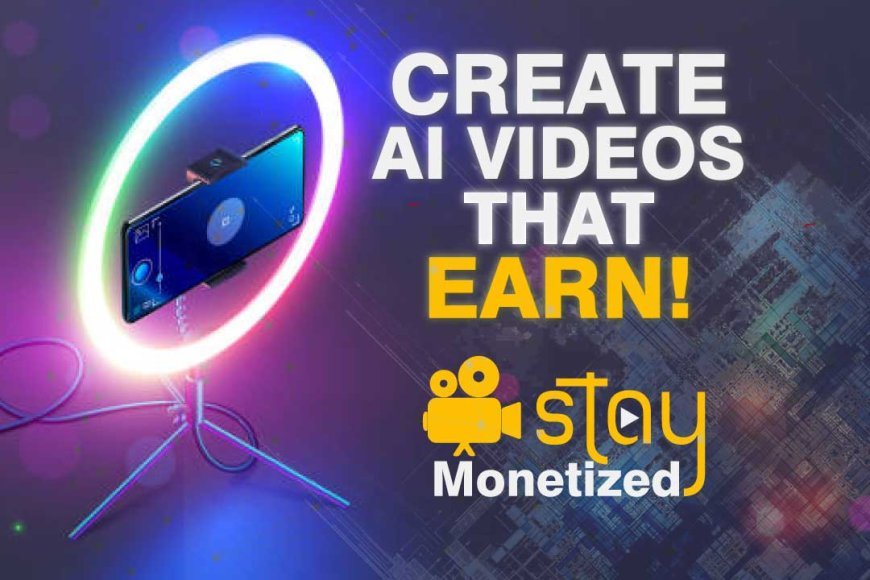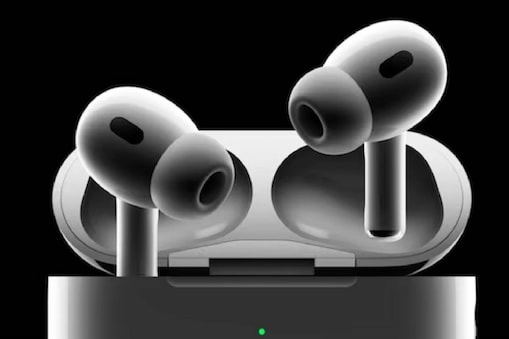A Guide to Create Videos Using AI for YouTube (2025 Policy-Compliant & Monetization-Safe)
Learn how to use AI tools like ChatGPT, ElevenLabs, and Runway to create YouTube videos that comply with 2025 monetization rules. Step-by-step guide to AI video creation, disclosure, and revenue tips.

With YouTube's 2025 policies now in effect, content creators must adapt quickly to maintain monetization while using AI tools. These updated rules demand greater transparency, originality, and ethical use of synthetic media such as AI-generated voices, visuals, and scripts. This comprehensive step-by-step guide is designed to help you leverage AI to enhance your video creation process—without compromising on compliance or revenue potential. Whether you're a beginner or a seasoned creator, following these practices will keep your channel safe, engaging, and monetization-ready.
Step 1: Understand the New YouTube Policy (Effective March 2024)
Before you begin creating content with AI, it is crucial to understand YouTube's updated 2025 policies. These policies emphasize transparency and accountability when using synthetic media. You must familiarize yourself with what qualifies as altered or synthetic content, and ensure your content complies with monetization standards. These foundational rules will guide how you produce, label, and distribute your AI-assisted videos responsibly on the platform.
-
You must disclose any realistic altered or synthetic content—including AI-generated voices that closely resemble real people, digitally created faces or characters, simulated events, or visuals that could mislead viewers into believing they are real. Disclosure should be made using YouTube's "Altered Content Disclosure" section during upload, and failure to do so may lead to reduced visibility, demonetization, or content removal.
-
Originality and transformation are essential for monetization. This means your content must reflect a unique perspective or creative approach, such as personal commentary, analysis, educational insights, or visual/audio editing that adds meaningful value. Simply combining AI-generated elements without human input or interpretation is not enough—YouTube rewards videos that are clearly shaped and enhanced by the creator's own voice, vision, or effort.
-
Reused content—such as AI-generated scripts, stock footage, or previously published material—will not qualify for monetization unless it includes clear commentary, transformation, or educational value. YouTube expects creators to add original insight, voiceover, editing, or other meaningful elements that make the content unique and engaging. Simply reposting or stitching together pre-made material, even if generated by AI, without any added creator input is considered low-effort and not eligible for revenue.
Step 2: Pick a Topic with Unique Value
Choose a subject where you can contribute your unique perspective, creativity, or professional experience. This could be a topic you're passionate about, have researched in depth, or can present in an engaging format. Whether it's a trending topic, a timeless lesson, or a personal journey, ensure you bring something new to the table that AI alone cannot replicate.
-
Personal insight or analysis — share your own reflections, experiences, or opinions that add depth to the topic, helping viewers understand it from a new angle.
-
Educational explanation — provide clear, informative content that simplifies complex ideas or delivers step-by-step learning experiences. This could include tutorials, how-to guides, informative breakdowns, or lesson-based narratives that help viewers gain knowledge or skills.
-
Creative storytelling — craft narratives that emotionally connect with your audience, whether through fictional stories, personal journeys, historical events, or imagined scenarios. Use AI to support the storytelling process (e.g., generating visuals or voiceovers), but ensure the structure, tone, and message are uniquely yours. This approach allows you to stand out with originality and emotional resonance that AI alone cannot provide.
Avoid copying AI-written scripts, news summaries, or reports and publishing them as-is. Instead, interpret the information, provide your own commentary or analysis, and use your voice to add context or unique value. This not only aligns with YouTube's monetization standards but also helps you build credibility and audience trust.
Step 3: Write a Script (Use AI + Your Voice)
You can use tools like ChatGPT, Gemini, or other AI writing assistants to brainstorm titles, outlines, and drafts. However, ensure you:
-
Edit in your tone — personalize the wording and sentence structure so it reflects your authentic style, voice, and way of communicating. This helps establish a consistent brand identity and keeps the viewer engaged.
-
Add your perspective — enrich the script by incorporating your opinions, unique insights, or expert viewpoints. This not only enhances authenticity but also distinguishes your content from purely AI-generated material, making it more engaging and valuable to your audience.
-
Focus on clarity and structure — organize your script logically with a clear beginning, middle, and end. Use short sentences, clear transitions, and avoid jargon to make the message easy to follow. This helps ensure that your audience stays engaged and can easily understand your key points, regardless of the complexity of the topic.
This layered approach—merging your unique voice, opinions, and clear structure—helps establish true originality, ensuring that your content stands out as genuinely human-led and policy-compliant on YouTube.
Step 4: Generate a Voiceover (AI Voice Allowed with Disclosure)
Use voice tools like the following to generate high-quality narration for your videos. These tools are ideal for creators who want realistic voiceovers without recording their own voice. However, it's important to use them ethically and in compliance with YouTube’s policy on synthetic content:
-
ElevenLabs — Offers hyper-realistic, multilingual voices with fine control over tone, pacing, and emotion. Great for narrating documentaries, tutorials, and storytelling videos. Also supports voice cloning (with permission), which should be used responsibly and always disclosed.
-
Play.ht — Known for its wide range of voices and support for different languages and emotions. Allows creators to adjust speech style, pronunciation, and tone. Useful for educational or explainer content.
-
LOVO.ai — A user-friendly platform that blends AI voiceovers with video editing features. Includes character-based voices for creative content and supports multiple export formats for ease of use.
Make sure to:
-
Use natural-sounding AI voices
-
Avoid mimicking real people without consent
-
Disclose AI usage if the voice is realistic
Step 5: Design Your Visual Content
Visual options:
-
Stock videos (from platforms like Pexels, Pixabay, and Videezy) — great for background scenes or b-roll footage. Choose clips that are visually appealing and support your message.
-
AI-generated animations (using tools like Runway, Pika, and Kaiber) — perfect for dynamic storytelling, explainer visuals, or fictional reenactments. Ensure these are transformed with your narration or overlays.
-
Infographics, captions, and motion graphics (created with Canva, Veed.io, or Adobe Express) — use these to highlight data, summarize key points, or increase viewer retention through visual cues.
Always add your commentary, branding, or edits to ensure the visual content is not just reused but clearly transformed and aligned with your message. videos** (from Pexels, Pixabay, etc.)
-
AI-generated animations (using tools like Runway, Pika, and Kaiber) — these platforms allow you to turn text prompts or video ideas into visually striking animated content. Runway is especially good for video editing with AI effects, Pika offers short-form generative video creation, and Kaiber excels in music-driven animations. Use these tools to create original visuals, but be sure to overlay your own voiceover, branding, or narrative context to meet monetization guidelines.
-
Infographics, captions, and motion graphics (created with tools like Canva, Veed.io, or Adobe Express) — use these to visualize statistics, emphasize talking points, break down complex ideas, or keep viewer attention through dynamic on-screen elements. These visuals not only improve accessibility and comprehension but also help increase retention and watch time. Make sure they are well-branded, contextually relevant, and integrated meaningfully with your narrative.
Always include your commentary, branding, or narrative overlays to transform the raw material into original content. This may involve adding voiceovers, inserting contextual explanations, reordering scenes to fit your story, or visually styling the footage with personalized elements. These steps not only make your content uniquely yours but also help it meet YouTube’s standards for monetization and originality.
Step 6: Edit for Quality & Creativity
Use editing tools like:
-
CapCut
-
Adobe Premiere Pro
-
DaVinci Resolve
Incorporate:
-
Subtitles — Adding subtitles helps improve accessibility, reach non-native speakers, and boost viewer retention. Use tools like YouTube’s built-in caption editor, Veed.io, or Descript to generate accurate captions and make them visually appealing.
-
Background music (royalty-free) — Subtle background audio enhances mood and professionalism. Choose music that suits your content theme while ensuring it doesn’t overpower narration. Sites like YouTube Audio Library, Epidemic Sound, or Artlist offer safe, high-quality options. music (royalty-free)
-
Brand visuals and voiceovers — Integrate consistent visual elements like intros, logos, lower-thirds, or color schemes that reflect your channel’s identity. Pair these with recognizable voice styles or signature catchphrases to enhance brand recognition. Whether you're using your own recorded voice or an AI-generated voice, maintain consistency in tone and presentation to help build a loyal audience and make your content instantly recognizable.
Step 7: Disclose AI Use in YouTube Studio
During video upload:
-
Go to https://studio.youtube.com and sign in.
-
Click on the “Create” button (camera icon with a plus sign) and select Upload videos.
-
Choose your video file from your device.
-
Under the Details tab, scroll down to the Altered Content section.
-
If your video includes realistic AI-generated visuals or voiceovers, click Yes under the “Does this video contain altered or synthetic content?” section.
-
You can optionally describe the type of AI-generated content (e.g., "AI voiceover and AI animation used for storytelling") in the description box provided.
-
Complete the rest of the upload process as usual—adding a title, description, tags, and thumbnail.
-
Click Next and proceed through the visibility and monetization settings.
This step ensures transparency and protects your content from demonetization due to undisclosed AI usage. Go to https://studio.youtube.com 2. Click "Upload video" 3. Scroll to Altered Content Disclosure 4. If AI voice or visuals are realistic, select "Yes" 5. Optionally, add a note in your video description:
"This video includes AI-generated narration and visuals created for educational/creative purposes."
Step 8: Ensure Monetization Eligibility
Make sure your channel meets the updated YouTube monetization requirements, which aim to ensure creators are consistently active and contribute original, valuable content:
-
1,500 subscribers
-
5,000 watch hours in past 12 months
-
No reuse/spam content
-
High engagement & content originality
Common Mistakes to Avoid
Avoiding these pitfalls can significantly increase your chances of maintaining monetization and growing your audience:
-
Not disclosing AI usage — Failing to mark realistic AI voices or visuals can lead to demonetization or takedowns. Always use YouTube’s "Altered Content" disclosure.
-
Reposting AI-generated scripts without transformation — Simply copying and pasting from AI tools without adding personal insight, commentary, or editing is considered low-effort and non-original.
-
Misleading visuals or deepfakes — Don’t create visuals that may intentionally mislead viewers into thinking AI-generated scenes are real events. Doing so risks content removal and violates community guidelines.
-
Stock visuals + AI voice only (with no editing) — Uploading videos made entirely of stock footage with an AI voiceover and no personal input is not sufficient for monetization.
Always apply your creativity, editing, and voice to transform AI-generated material into original content. That’s what keeps your content safe, compelling, and monetizable.
-
Not disclosing AI voice or visuals
-
Reposting AI scripts without commentary
-
Using misleading thumbnails or deepfakes
-
Uploading stock + AI voice with zero editing
Final Tip
AI is a powerful creative partner, but your voice and originality are what truly set your channel apart. Use AI tools to boost your production efficiency—whether it’s writing assistance, voiceovers, animations, or stock visuals—but never let them replace your unique insights, opinions, or storytelling.
The most successful creators in 2025 will be those who combine AI’s capabilities with human creativity. Think of AI as your co-pilot: it can draft, generate, and enhance, but you must steer, shape, and narrate.
Maintain transparency, stay consistent with your brand identity, and always aim to create content that informs, entertains, or inspires.
AI is your assistant, not the creator. Use it to enhance your ideas, but always add your human touch.
With the right strategy, your AI-powered YouTube content can be both monetizable and meaningful.
AI is your assistant, not the creator. Use it to enhance your ideas, but always add your human touch.
With the right strategy, your AI-powered YouTube content can be both monetizable and meaningful.
What's Your Reaction?













































































